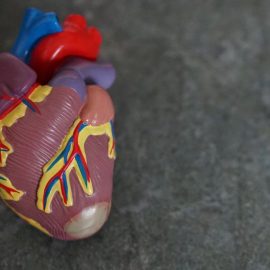

This article is an excerpt from the Shortform book guide to "What Happened to You?" by Bruce Perry and Oprah Winfrey. Shortform has the world's best summaries and analyses of books you should be reading.
Like this article? Sign up for a free trial here .
How can childhood trauma affect a person later in life? What mental health problems can arise?
For children who suffer abuse, trauma’s impact on the developing brain tends to create long-term issues. In their book What Happened to You?, Bruce D. Perry and Oprah Winfrey mention three broad ways that childhood trauma can impact people in the long-term: 1) mental and physical health issues, 2) flashbacks and triggers, and 3) unrecognized behavioral patterns.
Keep reading to learn more about the long-lasting effects of childhood trauma.
1) Mental and Physical Health Issues
The first long-lasting effect of childhood trauma is the onset of mental and physical health issues. According to Perry and Winfrey, suffering a traumatic event in childhood increases the risk of a range of mental and physical health issues later in life. People who experienced trauma as children often experience depression and anxiety, as well as physical symptoms such as chronic pain and increased risk of heart disease.
(Shortform note: Research confirms Perry and Winfrey’s assertion that trauma often causes long-lasting mental and physical health issues. Studies suggest that between 40% and 50% of trauma survivors experience anxiety and depression after a traumatic injury, and that these symptoms can last up to 20 years after the injury. In one study, 68% of trauma survivors reported experiencing physical health problems five years after the traumatic event.)
Perry and Winfrey note that doctors sometimes dismiss the physical manifestations of trauma. These doctors might tell patients that the pain is imagined or “psychological,” implying that it isn’t actually happening in the body. However, the authors maintain that the mind and body are connected. Physical pain from trauma is real, and addressing that pain is an important part of any care plan.
(Shortform note: The authors’ emphasis on the mind-body connection is part of a broader movement in Western medicine: In the past several decades, Western doctors and scientists have found direct links between mental health and physical health. However, this movement isn’t new—studying the mind and body together was a common practice in Western medicine until the 17th century. Furthermore, non-Western medical practices, such as Chinese medicine, have always been highly aware of the mind-body connection.)
2) Flashbacks and Triggers
Another common long-lasting effect of childhood trauma is flashbacks, in which a trauma survivor relives a traumatic moment. Perry and Winfrey explain that flashbacks occur when the brain creates long-lasting associations between the circumstances surrounding a traumatic event and the stress response. For example, if a drunk father hits his child, the child’s brain may create an association between the smell of alcohol and a state of fear. The brain learns that when that smell is present, bad things happen.
Our brains create these associations to protect us from similar situations in the future. For example, the next time the child smells alcohol, his brain will recognize the situation and tell him to hide or run away. However, the brain can sometimes do its job too well, triggering our stress response even if we aren’t in danger.
For example, when the child grows up, he might suddenly experience a stress response when a middle-aged man smelling of alcohol approaches him. Even if he isn’t in any immediate danger, he might feel suddenly anxious and uneasy. As we discussed above, this type of sustained stress response can have negative impacts on our mental and physical health.
| The Positive Side of Mental Associations While Perry and Winfrey talk about mental associations in a negative sense due to their role in perpetuating trauma, other authors claim that we can use these associations to create positive change in our lives. Here are two examples of how to use mental associations to your advantage: 1) Evidence suggests that you can use associations to help improve memory, by linking emotions and images to the thing you want to remember. For example, if you want to remember someone’s name, you could connect it to the lyrics from one of your favorite songs. By connecting their name to the positive emotion that you associate with the song, you’ll be able to recall it more easily. 2) Evidence also suggests that associations can help increase productivity by creating positive associations between your workspace and your efficiency. For example, working on your bed will make you less productive because you associate your bed with relaxation and sleep. Meanwhile, working at a desk you solely designate for work will make you more productive, as you’re in a space clearly linked to productivity. |
3) Unrecognized Behavioral Patterns
In addition to creating health problems and triggering flashbacks, trauma can influence behavior in more subtle ways. According to Perry and Winfrey, trauma survivors often develop negative habits and ways of seeing the world, sometimes without realizing it.
As we’ve mentioned, experiencing love and care as an infant allows us to develop healthy relationships later in life. Childhood trauma can create a vicious cycle in which the child doesn’t know how to receive love and becomes more and more isolated.
Perry and Winfrey explain that these behavioral patterns continue to influence us as adults, even though we might not be aware of them. When someone experiences trauma, they come to expect the same patterns of abuse that they suffered as children. This can inhibit our ability to form healthy relationships, especially if we’re unaware of how our childhood trauma is influencing us.
For example, if a person is abandoned by her parents when she’s young, she might later struggle to develop trust in intimate relationships. Because of her childhood trauma, she might mistakenly come to expect that anyone who says they love her will leave. However, if she isn’t aware of her childhood trauma or the effect that it has on her, she might think her feelings are based in reality. This could make it difficult for her to form a trusting relationship.
| How to Change Behavioral Patterns Behavioral patterns can be hard to break, especially ones formed in childhood and rooted in trauma like those the authors describe. However, behavioral psychologists have identified several strategies for changing behavior: 1) Self-reflect: Before changing a behavior, you must first figure out what it is that you want to change and how it’s impacting your well-being. You can do this individually through mindfulness practices or by talking with someone you trust. 2) Keep motivation in mind: We’re more likely to achieve our goals when we have the motivation to do so. Before beginning the process of changing behavior, write down your motivating reasons for changing. These could be related to how your behavior impacts you or your loved ones. 3) Start small: When thinking about your goals, start by identifying small situations where you can change your behavior or thoughts. For example, if you want to practice self-love, commit to writing down one nice thing about yourself every day. 4) View setbacks as learning opportunities: Patterns are hard to change for a reason. If you have a setback and lapse into old behaviors, don’t give up or get angry with yourself. Instead, think about what you can learn from the experience and how you might react differently in the future. It’s important to note that these strategies won’t work for everyone. As we’ll shortly explore, trauma-related behavioral patterns often require more processing than regular patterns. However, this advice could be helpful for those who’ve already made progress in working through trauma. |

———End of Preview———
Like what you just read? Read the rest of the world's best book summary and analysis of Bruce Perry and Oprah Winfrey's "What Happened to You?" at Shortform .
Here's what you'll find in our full What Happened to You? summary :
- How childhood trauma can have a severe and lasting impact on the brain
- Why it’s so important to address your trauma
- How to heal from trauma and develop healthy relationships






